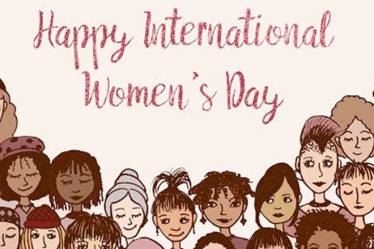By Ushasri Tirumala
International Women’s Day 2019: The Bureau of Labor Statistics report indicates that the number of women in the labor force will increase to 77.2 million in 2024. This is a strong indicator that the gender gap has significantly reduced through the years. However, the global labor force participation rate for women is still 48%, nearly 27% less than men. A lot remains to be done in terms of creating a conducive work environment for women, so that they join and grow in the workforce.
With a working-age population that will soon equal almost 20% of the entire global labour force, India is poised to be the largest workforce in the world in the coming decade. Despite our Nation’s steady growth in the labour market and positive global projections, the number of women in the workforce has been significantly declining in India. Companies therefore need to reach beyond employee benefits and drive women empowerment in the workforce to encourage women to participate and remain employed. Formulation of policies, developing an enriching company culture and taking on actions and decisions that empower women employees should be in focus.
While the impact of technology on workforce transformation is evident, the bottleneck at leadership levels for women is still prevalent. The IT industry in India, for example, has 30% women in the workforce, however there are less than 1% women at the leadership level according to NASSCOM.
There is no dearth of female talent in terms of technical capabilities but socio-cultural roadblocks are the larger obstacles in the way to achieving gender parity today. Companies must encourage women to go beyond completing task lists and aim at achieving their ambition. Organizations in this regard must increase the representation of women in significant leadership roles, and focus on the development of women in technology as well. There are various initiatives companies can take to empower women in their organizations.
Equal opportunity and mentorship
Companies must build women leadership strength across all technical/managerial ladders. Development opportunities for women can be facilitated through improved HR and business practices. Further, existing leadership should encourage and promote creative confidence to enable innovation. Hosting interaction sessions for women, with senior women leadership will motivate employees to develop higher aspirations and provide the right learning opportunity. This will provide women with chances to rise and succeed as much as their male counterparts.
Active engagement of women employees
Companies should look to identify and bridge competency gaps and improve soft skills. One should focus on work-life integration of women employees, especially working mothers as it is typically seen that women tend to off ramp while family grows and family comes first in certain time periods. Encouraging these women to come back into workforce and refresh their skill set would be useful. Engagement programs on yoga, self defense, nutrition, health, finance and so forth encourages overall development of women by focusing on various aspects. Women specific trainings in work-life balance and self-defense are necessary education in today’s context. These programs help women employees immensely in their professional career and growth by tending to their personal needs.
Critical competencies for leadership – Communication, Networking
Effective Communication is critical in leadership roles. Many women find it difficult to speak at public forums or in meetings. To overcome this challenge, companies must initiate mentorship programs, annual events, panel discussions on stress management, to build effective communication skills in women employees. These events create platforms for women to network, share knowledge and grow.
Holistic development for women employees
Today’s hyper connected world enables us to connect and network seamlessly within seconds. Companies should encourage women in their workforce to network with other organizations to share and learn best practices. Companies can develop women leaders with area specializations through partnership with other organizations with similar missions. As growth is not a unidirectional process, inter-learning and collaboration will enable companies to grow faster and holistically.
Helping women gain the right skills and ensuring their fair representation is the need of the hour. Leaders across companies and institutions need to educate their stakeholders on the importance of right-skilling, not only for men but also for women. Diversity of thought, natural creative ability & perseverance, which are all innate gender advantages of women, would push them to be successful leaders. Overall, organizations must work to create transparent and enriching workspaces in order to see more female talent not only in the future pool of work but at leadership levels.
(The author is Senior Vice President & General Manager, Manhattan Associates. Views expressed are her own.)
